Equipment Manufacturing
Intelligent Equipment Manufacturing Industrial Park Construction Project of Jilin City
1. Introduction to the Project
1.1 Project background
1.1.1 Product introduction
Intelligent manufacturing equipment refers to manufacturing equipment with functions of perception, analysis, reasoning, decision-making, and control. It is the integration and in-depth fusion of advanced manufacturing technology, information technology, and intelligent technology, and is the next-generation manufacturing equipment for achieving high-efficiency, high-quality, energy-saving, environmental-friendly, safe, and reliable production.
The project will rely on the advantages of the advanced equipment manufacturing industry in Yongji Economic Development Zone to build an intelligent equipment manufacturing industrial park, radiate and drive a number of equipment manufacturing enterprises and supporting enterprises to settle in, and create an intelligent equipment manufacturing industry agglomeration area.
1.1.2 Market prospect
1. Global development status of the intelligent manufacturing equipment industry
The equipment manufacturing industry is the cornerstone of the manufacturing industry and the key to the transformation and upgrading of the manufacturing industry. In recent years, developed countries such as the United States, Germany, the United Kingdom, and Japan have promulgated national strategies with intelligent manufacturing as the core, such as the "Advanced Manufacturing Leadership Strategy" in the United States, "Industry 4.0" in Germany, the "New Robot Strategy" in Japan, and "Industry 5.0" in the European Union. All of them take intelligent manufacturing as the main means to strive to seize the commanding heights of a new round of global manufacturing competition.
Under the background of industrial policy support and macro-economic development, the manufacturing industry is increasingly showing a development trend towards intelligence, flexibility, and unmanned operation. Led by emerging technologies such as artificial intelligence, machine vision, and flexible control, the traditional manufacturing industry has accelerated its pace of transformation and upgrading towards intelligence, creating favorable conditions for intelligent manufacturing.
Relevant data shows that the global market demand scale for intelligent manufacturing in 2023 was $4.542991 trillion. Compared with the global market demand scale of $4.181835 trillion in 2022, it increased by $361.156 billion, with a year-on-year growth rate of 8.64%, and it maintains a stable growth. It is expected to reach $787.54 billion in 2030. With the commercial implementation of new technologies such as the Internet of Things, edge computing, cloud computing, big data, and artificial intelligence, which have gradually emerged from scientific concepts and basic science fields, as well as the increasing attention of governments to industrial automation in the manufacturing process, the surging demand of downstream enterprises for time and cost savings, the increasing complexity of the supply chain, and the greater emphasis on regulatory compliance, the global intelligent manufacturing market scale will show an accelerating growth trend.
2. Development status of the intelligent manufacturing equipment industry in China
(1) Industrial scale
In 2023, the industrial scale of China's intelligent manufacturing equipment was around 3.5 trillion yuan. The industrial scales in 2021 and 2022 were 3 trillion yuan and 3.2 trillion yuan respectively. The growth rate of the industrial scale has remained above 8% in the past three years. In terms of the regional distribution of the industrial scale, the industrial scale of intelligent manufacturing equipment in East China accounts for more than 40% of the national total, the industrial scale in Central-South China accounts for 26.8% of the national total, and North China and Southwest China are slightly less, accounting for 11.4% and 10.7% of the national total respectively.
Table 1 Industrial Scale and Growth Rate of China's Intelligent Manufacturing Equipment Industry in 2021-2023
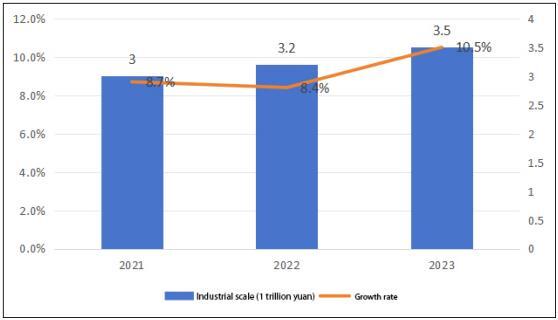
Table 2 Regional Structure of China's Intelligent Manufacturing Equipment Industry in 2023
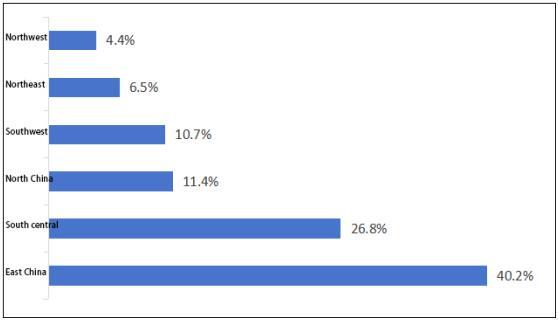
(2) Industrial structure
In 2023, the industrial scale of major complete sets of equipment in the intelligent manufacturing equipment industry accounted for more than half, reaching 54.1%. The industrial scales of robots and CNC machine tools accounted for 4.4% and 11.1% respectively. The proportion of additive manufacturing equipment was relatively small, at 1.1%. The remaining part is other intelligent equipment, mainly including independent mechanical equipment commonly used or specialized in the industry, with an industrial scale accounting for 22.3%.
(3) Industrial import and export scale
1) The import scale has been on a downward trend in recent three years.
In the past three years, the import scale of China's intelligent manufacturing equipment industry has generally shown a downward trend. The largest decline was in 2022, reaching 8.1%. The continuous decline in the import scale indicates that the domestic market satisfaction rate is constantly increasing, the intelligent manufacturing equipment industry is stable and improving, the endogenous innovation ability of the manufacturing industry is constantly strengthening, and the production methods, enterprise forms, business models, and employment methods are accelerating their transformation.
Table 3 Import Scale and Growth of Products in China's Intelligent Manufacturing Equipment Industry in 2021-2023
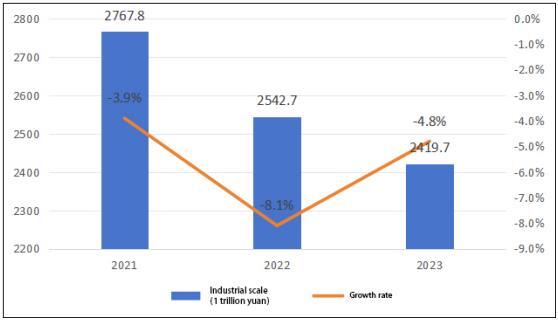
2) The growth rate of the export scale has increased slightly compared with the previous year.
In the past three years, the foreign trade of China's intelligent manufacturing equipment industry has been stable and rising, and the export value has been growing steadily. The export growth rate of China's intelligent manufacturing equipment declined in 2022 and rebounded in 2023. Although the export of China's intelligent manufacturing equipment is declining, industry enterprises are seizing foreign trade opportunities, deeply cultivating key markets such as Africa, Europe, and Latin America, and gradually establishing a new pattern of a diversified foreign trade market.
Table 4 Export Scale and Growth of Products in China's Intelligent Manufacturing Equipment Industry in 2021-2023
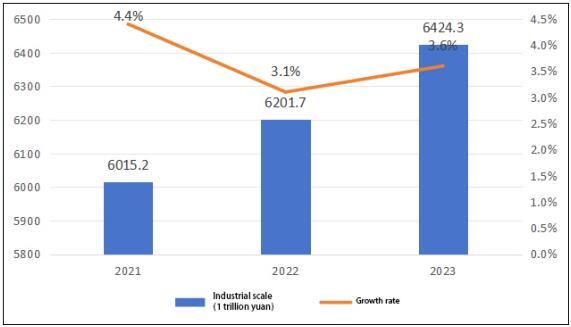
(4) Development prospects
The "Action Plan for Promoting Large-scale Equipment Updating and Consumer Goods Trade-in" printed and issued by the State Council has provided huge market demand for the intelligent manufacturing equipment industry and will drive the growth of the intelligent manufacturing equipment industry. Against this background, China's intelligent manufacturing equipment industry will usher in a larger development space. It is expected that by 2026, the industrial scale is expected to exceed 5 trillion yuan.
1.1.3 Advantageous conditions of project construction
(1) Policy advantage
The "14th Five-year Plan for the Development of Intelligent Manufacturing" emphasizes that during the "14th Five-year Plan" period, China will vigorously develop intelligent equipment, including intelligent welding robots, advanced laser processing equipment such as ultra-fast lasers, intelligent detection equipment and instruments such as laser tracking measurement. By 2035, digital networking will be fully popularized in manufacturing enterprises above designated size, and key backbone enterprises in key industries will basically achieve intelligence.
The "Industrial Energy Efficiency Improvement Action Plan" proposes to promote the energy-saving, efficiency-improving, transformation, and upgrading of key industries. Accelerate the industrial application of advanced forming process technologies such as integrated die-casting, mold-free casting, ultra-high-strength steel hot-forming precision cold forging, heterogeneous material welding, lightweight of lightweight high-strength alloys, and laser heat treatment.
The "Action Plan for the Intelligent Transformation and Digital Transformation of the Manufacturing Industry of Jilin Province (2023-2025)" puts forward a number of policies in areas such as automobiles, medicine, equipment, food, petrochemicals, and raw materials to further promote the intelligent transformation and digital transformation of the manufacturing industry.
(2) Resource advantage
Mineral resources: The main discovered large-scale mineral species in Yongji include molybdenum ore, limestone ore, pyrite, copper ore, gold ore, fluorite ore, silica ore, calcite ore, diorite, granite, and serpentine. Among them, the molybdenum ore reserves are 1.65 billion tons, and the limestone reserves are 120 million tons. Resources such as oil, natural gas, geothermal energy, and mineral water are abundant and of high quality, all of which have high development value.
Electric power resources: Yongji is located downstream of the three major cascade hydropower stations (Baishan, Hongshi, and Fengman Hydropower Stations) in Northeast China. The installed capacity of the substation in Yongji Economic Development Zone is 40,000 kVA, with a surplus capacity of 25,000 kVA.
Water resources: Yongji is located in the upper reaches of the Songhua River and is one of the few water-rich areas in China. The water supply capacity of the Songhua River Diversion Project is 50,000 tons per day, and 30,000 tons are still available for use.
Land resources: In the industrial park, 5.5 square kilometers of industrial land is planned, which can provide sufficient industrial land for investors.
(3) Industrial advantage
In recent years, the leading industries of Yongji County, such as equipment manufacturing, auto parts, and new materials, have enhanced their innovation capabilities, and the effect of clustered development is obvious. Yongji County will focus on the direction of "high-end, intelligent, and green", strengthen the innovative and integrated development of the industrial industry and "Digital Yongji", optimize and upgrade the industrial system, improve the modernization level of the industrial chain and supply chain, accelerate the construction of a provincial-level equipment manufacturing industrial park, an industry-university-research cooperation innovation demonstration base, a molybdenum tailings comprehensive utilization park, and a building materials park supporting Jidong Cement, and create a comprehensive uplift zone leading the transformation and innovative development of the county-level economy, providing strong support for building a provincial-level industrial transformation pilot area.
148 industrial processing enterprises have been introduced into Yongji Economic Development Zone, including 32 large-scale industrial enterprises, forming a number of enterprise clusters with strong supporting capabilities and competitiveness. A development pattern mainly based on auto parts, equipment manufacturing, and strategic emerging industries has basically taken shape. Yongji Economic Development Zone has become a concentrated area of Yongji's industry, the main carrier of economic development, the main support of fiscal revenue, the main channel for employment, and a growth pole for county-level breakthroughs.
(4) Talent advantage
There are 9 universities in Jilin City. The full-time student population is nearly 100,000, and about 30,000 students graduate from universities every year. There are about 61,000 professional and technical talents and 496,000 skilled talents in the city, among which 144,000 are highly skilled talents.
Jilin Railway Vocational and Technical College in Yongji Economic Development Zone and the vocational high school in the county can provide enterprises with professional and technical talents and skilled workers through targeted training. The labor resources in the surrounding urban and rural areas are abundant, and the labor cost is relatively low.
(5) Location advantage
Yongji Economic Development Zone has a well-developed transportation network and convenient logistics. There are 94 trunk roads of various levels in the territory. Among them, National Highway 202 starts from Heihe in the north and reaches Dalian Port; National Highway 302 starts from Hunchun, Jilin and ends in Ulanhot, Inner Mongolia; railway trunk lines to Ningbo, Tianjin, Shenyang and other places pass through Yongji. The Jilin-Shenyang Expressway, Jilin-Changchun Expressway, Harbin-Dalian High-speed Railway, and Changchun-Jilin High-speed Railway connect the national expressway network and high-speed railway network. Yongji Economic Development Zone is 65 kilometers away from Changchun Longjia International Airport, 230 kilometers away from Harbin, 400 kilometers away from Shenyang, 350 kilometers away from the Hunchun Port, and 700 kilometers away from Dalian Port. The developed three-dimensional transportation network of sea, land, and air brings unlimited business opportunities and convenience to investors.
1.2 Contents and scale of project construction
The project covers an area of 47000㎡, including construction area of 35000㎡. It will purchase production line equipment for intelligent equipment manufacturing and support the construction of production workshops, office buildings, warehouses, and auxiliary facilities.
1.3 Total investment of the project and capital raising
1.3.1 Total investment of the project
The total investment of the project is 500 million yuan, including the construction investment of 400 million yuan, and current funds 100 million yuan.
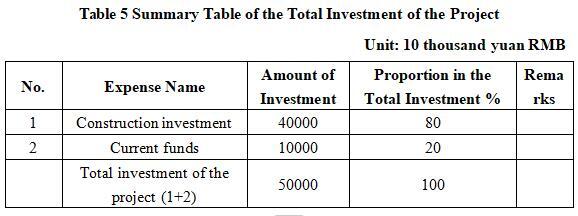
1.3.2 Capital raising
Self-raised by the enterprise.
1.4 Financial analysis and social evaluation
1.4.1 Main financial indexes
After the project reaches the production capacity, its annual sales income will be 730 million yuan, its profit will be 110 million yuan, its investment payback period will be 7 years (after the tax, including the construction period of 2 years), and its return on investment will be 22%.
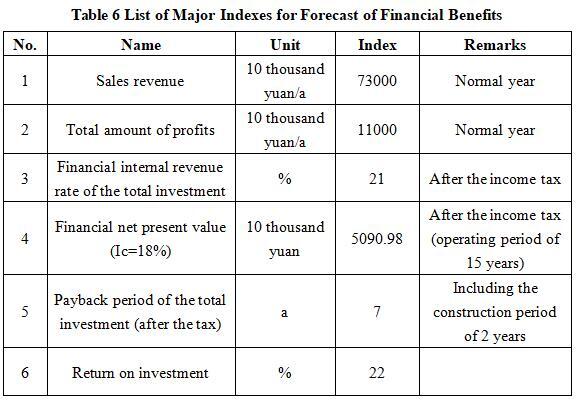
Note: “10 thousand yuan” in the table is in RMB.
1.4.2 Social evaluation
After the project is completed, the industrial park will focus on introducing intelligent manufacturing equipment production enterprises, thus forming an intelligent equipment manufacturing base with a full-industry chain and full-life-cycle combination of light and heavy equipment, and taking into account R&D, manufacturing, and services. It will create an industrial development agglomeration area, and enhance the core competitiveness and market share of intelligent equipment in Jilin City.
1.5 Cooperative way
Joint venture, cooperation, sole proprietorship, and other methods can be discussed in person.
1.6 What to be invested by the foreign party
Capital, and other methods can be discussed in person.
1.7 Construction site of the project
Yongji Economic Development Zone.
1.8 Progress of the project
In the process of foreign investment attraction.
2. Introduction to the Partner
2.1 Basic information
Name: Management Committee of Yongji Economic Development Zone
Address: No. 91, Jihua Road, Kouqian Town, Yongji County
2.2 Overview
Yongji County is located in the central eastern part of Jilin Province, in the transition zone from the Songnen Plain to the Changbai Mountain. It is adjacent to Jilin City in the east and north, Shuangyang District of Changchun City in the west, and Panshi City and Huadian City in the south. The entire area is included in the core hinterland of the "Changchun-Jilin-Tumen Development and Opening Pilot Zone" and the key development area of Changchun-Jilin integration. The county has a total area of 2625 square kilometers, governing 7 towns, 2 townships (among which Chaluhe Town is entrusted to the China-Singapore Food Zone for management), and 1 provincial-level economic development zone, Yongji Economic Development Zone. The county is located in Kouqian Town. The Beidahu Sports and Tourism Economic Development Zone, which is under the jurisdiction of Jilin City, and the China-Singapore (China-Singapore) Jilin Food Zone are located within the territory of Yongji County. The total population of the county is 420,000, of which 300,000 are rural population. There are 22 ethnic groups such as Han, Manchu, Korean, and Hui, and the Han ethnic group accounts for 80% of the total population.
Yongji Economic Development Zone was established in 1999. It is one of the first-batch provincial-level economic development zones in Jilin Province, an agglomeration area of Yongji County's industry and commerce, a bearing area for the same-city-style development with Jilin City, and a pioneer area for the important strategy of Changchun-Jilin integration. It is located in Yongji County, Jilin Province, covering an area of 50.7 square kilometers, with a planned area of 20 square kilometers. The development zone has formed three leading industries: auto parts, equipment manufacturing, and strategic emerging industries. It has developed into a first-class development zone with a solid economic foundation, complete infrastructure, clustered leading industries, and an excellent comprehensive environment. It has been rated as an advanced development zone by the provincial government for 11 consecutive years. Among more than 120 development zones and industrial concentrated areas in the province, its development strength has always been among the top, ranking in the first echelon of the province's development zones. It is a fertile land for investors and a home for entrepreneurs.
The development zone adheres to the "two-wheel drive" of industry and service industry, accelerates the improvement of industrial quality and efficiency, and promotes the clustered development of the service industry. Adhering to the principle of "highlighting characteristics, complementing advantages, and differentiated development", it highlights the leading role of the development zone and coordinates the synchronous development of infrastructure, secondary, and tertiary industries. According to the spatial layout of "two wings and one body", it realizes in-depth connection with Jilin City. After years of rapid and scientific development, a pattern of advantageous industries has gradually taken shape. A total of 148 industrial processing enterprises have been introduced into the district, among which 32 are large-scale industrial enterprises. This has led to the formation of a number of enterprise clusters with strong supporting capabilities and competitiveness. The development is prominently characterized by the agglomeration of the "three characteristic industrial functional zones" of auto parts, equipment manufacturing, and strategic emerging industries, as well as the support of major projects. The district is striving to develop into a modern development zone with a strong economic driving capacity, obvious core competitive advantages, the clustered development of leading industries, and a harmonious and stable economic and social environment.
2.3 Contact method
Postal code: 132200
Contact person: Gao Jiaxing
Tel: +86-432-64230002
+86-13384411817
E-mail: 63310539@qq.com
Contact method of the city (prefecture) where the project is located:
Contact unit: Investment Promotion Service Center, Cooperation and Exchange Office of Jilin City
Contact person: Wang Yanchao
Tel: +86-15843218881


